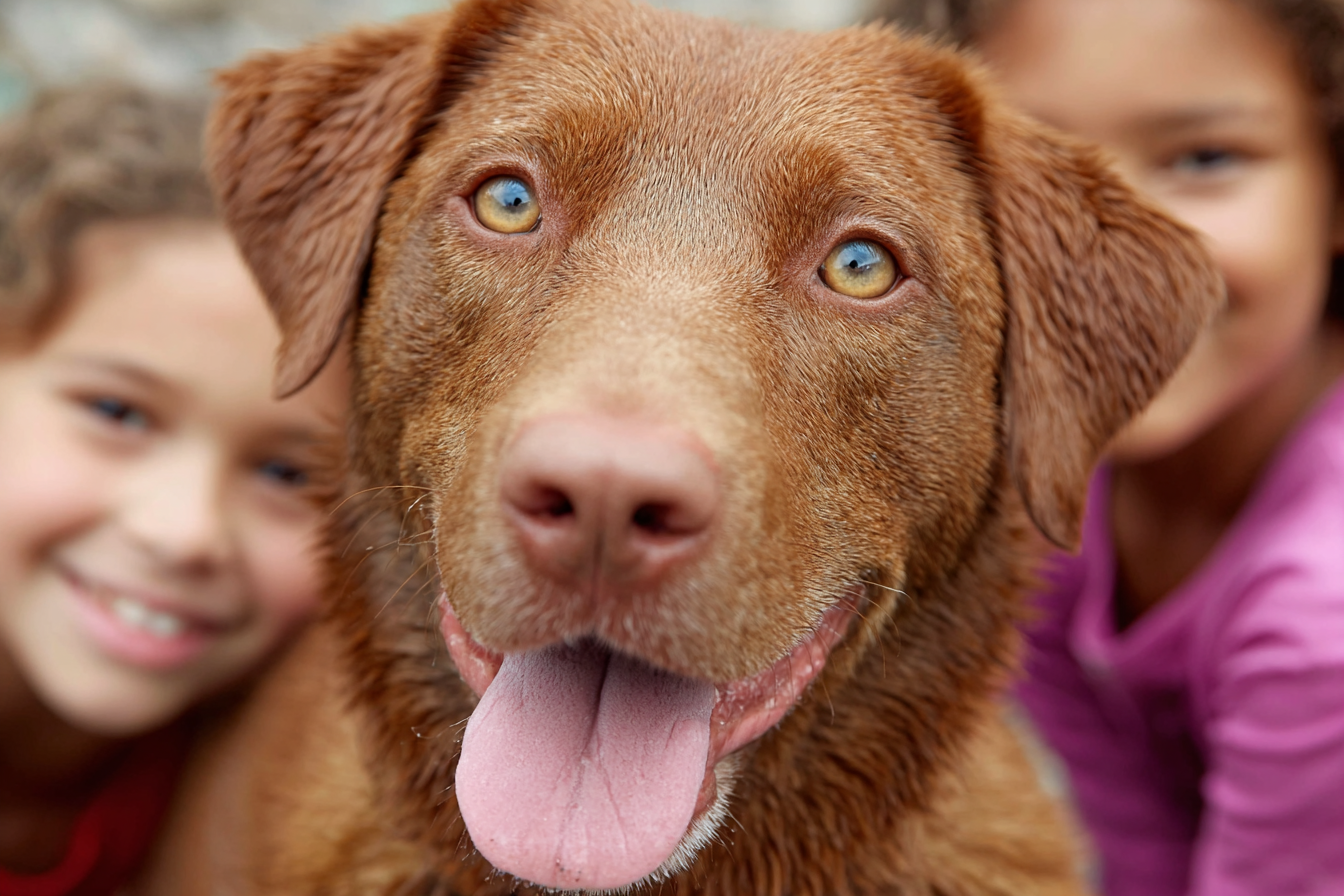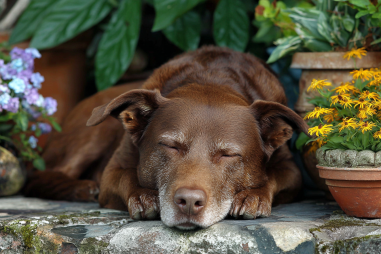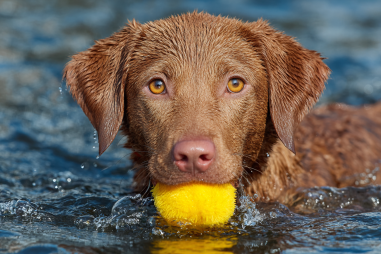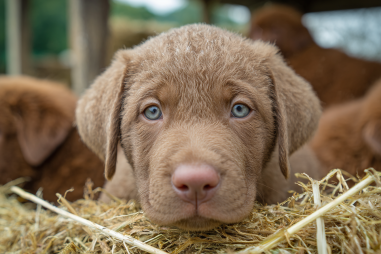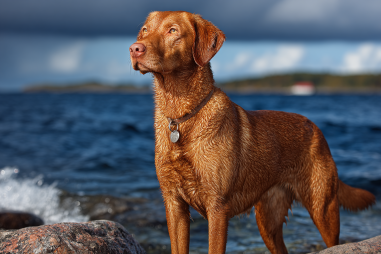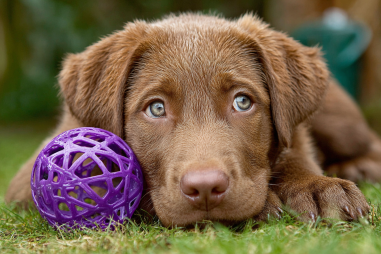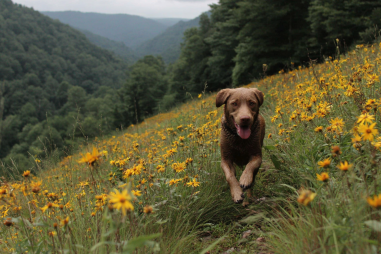Many families considering a Chesapeake Bay Retriever often wonder how well this breed gets along with children. Known for their intelligence and loyalty, these dogs can be a wonderful addition to households with kids, but like any breed, they come with specific traits and needs. Understanding how Chesapeake Bay Retrievers behave around children, how to ensure safety, and ways to foster a positive relationship can make all the difference in creating a happy, harmonious home.
Typical Behavior Around Children
Chesapeake Bay Retrievers, often affectionately called “Chessies,” are known for their protective and loyal nature. They tend to be very devoted to their family members, including children. These dogs generally enjoy being part of family activities and have a gentle side when interacting with kids. However, their energy levels and strong-willed personality mean they need structure and consistent guidance to behave well around younger family members.
Typically, a Chessie is patient and tolerant, especially with children who respect their boundaries. They are known to be alert and watchful, often taking on a protective role within the family. However, because of their natural guarding instincts, they may be wary of strangers and cautious during unfamiliar social interactions. This vigilance can actually be a positive trait for families who want a watchful, protective pet around children.
That said, Chesapeake Bay Retrievers are not generally suited for very young toddlers who may unknowingly provoke or overwhelm the dog with sudden, rough handling. Proper introductions and gradual socialization help the dog feel comfortable and can foster warm, friendly interactions even with younger kids as they grow.
Supervision and Safety Guidelines
Even the most gentle dogs require supervision when interacting with children, and Chessies are no exception. It’s important that parents or caregivers always oversee playtime to prevent any accidental injury or misunderstandings between dog and child. This supervision ensures both parties feel safe and respected.
Here are some key safety guidelines for families with Chesapeake Bay Retrievers and children:
- Never leave young children alone with the dog: Toddlers and young kids may unintentionally pull tails, ears, or fur, which can provoke a defensive reaction.
- Watch for warning signs: If the dog shows signs of stress like growling, lip licking, or backing away, give them space immediately.
- Teach gentle handling: Children should learn to pet softly and avoid sudden, loud movements.
- Designate safe zones: Have specific areas where the dog can retreat if it feels overwhelmed, such as a crate or a quiet nook.
- Use leash or controlled environments: When children are around, especially in new settings, keeping the dog on a leash or in a controlled space can minimize unexpected behaviors.
Teaching Kids How to Interact with Dogs
Educating children on interacting respectfully with their Chesapeake Bay Retriever is essential for building trust and a positive relationship. Kids should understand that dogs have feelings and limits, just like people do. Teaching them some basic guidelines can prevent many common problems and ensure fun, safe interactions.
Some important points to teach children include:
- Ask before petting: Children should always ask a parent’s permission before approaching or touching the dog.
- Approach calmly: Moving slowly and quietly helps keep the dog relaxed.
- Pet gently: Using soft strokes and avoiding sensitive areas like the tail, ears, and face is best.
- Avoid disturbing the dog while it’s eating or sleeping: Dogs need their quiet time without interruptions.
- Respect the dog’s signals: If the dog moves away or seems uncomfortable, children should let them be.
Additionally, role-playing and reading children’s books about dog safety and behavior can make learning these concepts fun and memorable. When kids understand how to respectfully interact, it greatly reduces the risk of accidental bites or fear-based reactions from the dog.
Activities to Bond with Children
Chesapeake Bay Retrievers thrive on active engagement and love to be involved in family activities. Creating shared experiences can deepen the bond between the dog and the children, leading to a happier household. Here are some enjoyable ways kids and Chessies can bond together:
- Fetch games: Chessies are natural retrievers, so playing fetch in the yard or park can be a favorite activity.
- Long walks or hikes: Taking walks together allows for exercise and quality bonding time.
- Training sessions: Teaching simple commands or tricks allows children to build confidence and communicate with the dog.
- Swimming: This breed loves water, so supervised swimming (whether in a pool, lake, or shallow beach) can be a joyful shared activity.
- Obstacle courses or agility games: Setting up fun challenges encourages mental and physical engagement.
Engaging in these activities regularly not only helps the dog burn off energy but also reinforces positive interactions between your Chessie and your children.
Managing Energy and Play Styles
Chesapeake Bay Retrievers are energetic and intelligent dogs that need both physical exercise and mental stimulation. Without enough activity, they may become bored, which can sometimes lead to unwanted behaviors like chewing or jumping. When living with children, it’s important to manage the dog’s energy levels to maintain harmony in the home.
Chessies generally enjoy vigorous play but may have a rough play style, especially when they are young. While excitement is natural, guiding your dog to use gentler play techniques is crucial when interacting with kids.
To effectively manage energy and play styles:
- Provide daily exercise: Long walks, runs, swimming, or play sessions help burn energy positively.
- Incorporate mental stimulation: Puzzle toys, obedience training, and scent games keep their minds sharp.
- Set clear boundaries: Teach the dog “gentle” or “easy” commands during playtime to moderate rough behavior.
- Supervised playdates: When children play with the dog, keeping a watchful eye can prevent boisterous behavior from escalating.
By maintaining consistent routines and structured play, your Chesapeake Bay Retriever will be happier and more relaxed around children.
Creating a Safe and Happy Household
Bringing a Chesapeake Bay Retriever into a family with children can be a truly rewarding experience when everyone understands the breed’s unique personality and needs. With proper supervision, kid-friendly training, and plenty of shared activities, Chessies can become loving companions and protectors for children.
Remember, the key ingredients for success include:
- Respect for the dog’s boundaries from both kids and adults
- Consistent routines to manage the dog’s energy and behavior
- Educational opportunities so children learn safe and gentle ways to interact
- Time spent bonding through play, exercise, and training
By following these guidelines, your Chesapeake Bay Retriever will thrive as a trusted family member and joyful playmate for your children, creating countless cherished memories along the way.

